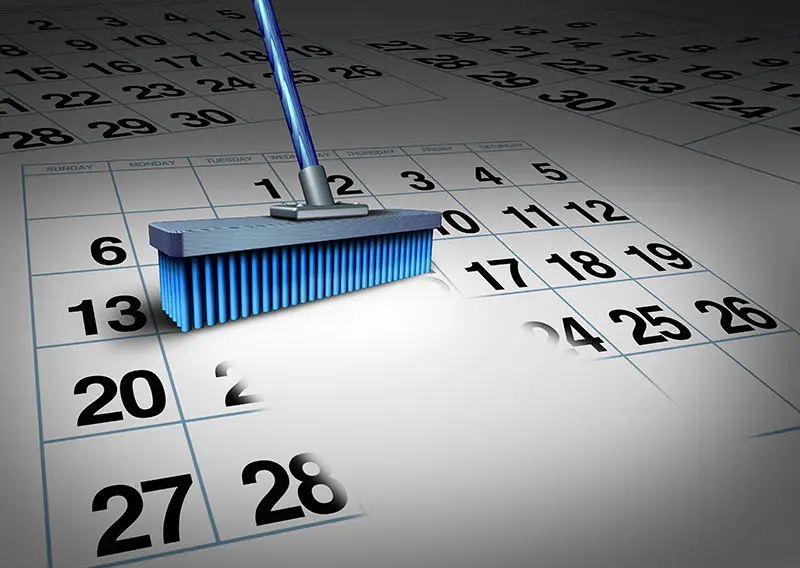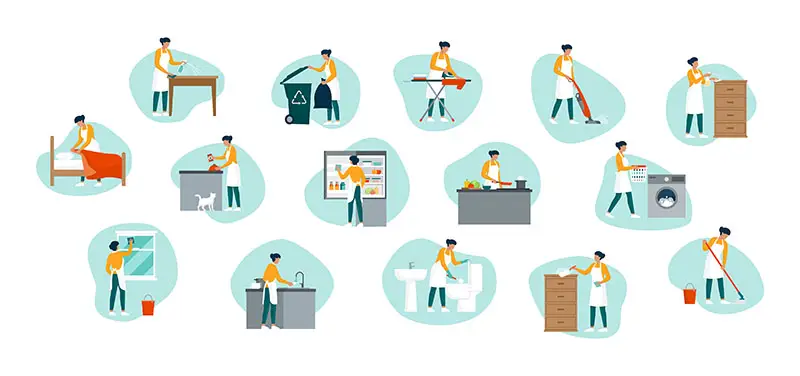Click here to get this post in PDF
A clean work environment contributes to workplace safety and may increase productivity within your establishment. Employees can concentrate on other important tasks than getting sick or infected by COVID-19.
In a hybrid workplace model, you must develop ways to incorporate cleaning schedules that conform to the prevailing health restrictions. It may save you hospital bills, while ensuring that your core business runs uninterrupted.
What’s more, you can enlist Pur cleaning services Colorado Springs or any similar service provider in your area to handle hygiene matters. They can give tips on ensuring cleaning protocols are adhered to by team members.
Want to learn how to implement cleaning schedules in a hybrid workplace? Read on!
1. Introduce Cleaning Stations
Begin by strategically installing cleaning stations that are fully equipped with hygiene tools, like sanitizers and masks. It forms a baseline for guiding anyone accessing the workplace and highlights the necessary cleaning activities needed at various workstations within your business premises.
Such cleaning arrangements can perfectly fit hybrid workplace models that allow employees to work remotely or in-office. A cleaning station would be the first point of contact when reporting to workplaces and familiarizing oneself with the cleaning schedule requirements, like what cleaning agents to use, among others.
2. Cleaning And Workplace Schedule Integration
Considering the flexibility of the hybrid workplace concept, you can streamline the cleaning schedule and operations at the workplace. It ensures that all workstation areas are thoroughly cleaned and kept tidy throughout for team members to work comfortably.
Furthermore, cleaners can plan when to visit workstations for a quick dusting without interfering with your business operations. They can coordinate with your employees to clean work surfaces, floors, and other installations or facilities.
3. Enforce Hygiene And Cleaning Policies
It’s not a secret that COVID-19 restrictions have changed how people view cleaning and hygiene at workplaces. You’re encouraged to have your employees work from home to keep them from getting sick.
In addition, you can develop cleaning and hygiene policies, such as using sanitizers at work, to reduce the chances of team members getting sick. The cleaning schedule can serve as a guideline to help you manage workplace safety and ensure everyone takes the initiative to maintain cleanliness at work.
4. Monitor Cleaning Practices
Just like monitoring your team members’ work performance, you can include a cleaning schedule in your management system to ensure that your hybrid workplace model adheres to your cleaning standard.
Design cleaning checklists, highlight areas, discuss what to use when cleaning and how to use them, and encourage cleaners to report once the job is completed. Moreover, you can assign your team members to audit the cleanliness of your hybrid workplace and give an adequate score.
5. Leverage Technology Solutions
Technological advancements are changing how products and services are delivered in every sphere of life. Cleaning service providers are gradually adapting to new ways of ensuring their client workplaces are spotless by leveraging tech cleaning solutions. For instance, you can use smartphones to transmit the cleaning schedule planned for the whole year, and it allows your team to organize their workflow using a digital cleaning calendar.
What’s more, you can share cleaning schedule templates online to your team members for effective planning, and set reminders to alert your cleaning team to do the needful. It saves time and overheads looking at the nature of the hybrid workplace model.
6. Involve Team Members
Implementing a cleaning schedule takes a combined effort of both your team members and the service providers. It’s important that everyone involved knows the existing cleaning schedule and what the management expects. Therefore, develop a training plan purposely to enlighten your team of the upcoming cleaning schedules according to your hybrid workplace.
Furthermore, a knowledgeable team can simplify the implementation process of such schedules. Also, you can use a team member reward system to encourage everyone to take cleaning and hygiene seriously.
Conclusion
Having a cleaning schedule is the first step toward creating a conducive workplace environment. It enables you to plan for equipment, cleaning materials, and time management. In addition, you need to match your hybrid workplace model, and the cleaning needs to ensure that your business operations are running smoothly.
Moreover, implementing a cleaning schedule demands full cooperation from your team members for effectiveness. You can customize the cleaning strategy to suit your business processes and ensure that your clients are satisfied with your services. Also, design the cleaning schedule in such a way that it covers all areas of your business to keep your team from falling sick and experiencing other safety issues at work.
You may also like: 5 Best Practices Of Industrial Cleaning In Light Of COVID-19
Image source: Depositphotos.com


